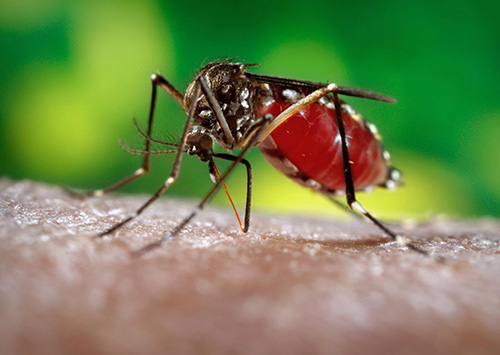
A team of scientists at the University of California (UC), Riverside has just published data that describes how they have targeted mosquito egg maturation at the molecular level, focusing on small regulatory RNA molecules, called microRNAs (miRNAs)—the targeting of these reproductive events could be an effective vector control strategy. The findings from this study were published recently in PNAS through an article entitled “Transcriptome-wide microRNA and target dynamics in the fat body during the gonadotrophic cycle of Aedes aegypti.”
The UC Riverside team studied miRNA expression in the Aedes aegypti fat body—the metabolic center that plays a key role in reproduction. Since proper functioning of the fat body is essential for the development of the female reproductive system after a blood meal, identifying which miRNAs are important to fat-body functions, and what specific genes they target, can help design ways to manipulate the levels of miRNA or their targets, affect their interactions, disrupt mosquito reproduction, and thus prevent the spread of diseases the mosquitoes transmit. Interestingly, the investigators observed five major miRNA expression peaks within a 48-hour period following the female mosquito's blood meal.
“What we observed is that the levels of many miRNAs change significantly throughout the 48-hour period following a blood meal, indicating that these miRNAs, in turn, may be establishing significant changes in expression of key genes during this time in the fat body,” explained co-senior study investigator Fedor Karginov, Ph.D., assistant professor of cell biology and neuroscience at UC Riverside. “Our work has given us a much-needed picture of which miRNAs are abundant in the fat body tissue, how each miRNA subgroup changes over time, and we have confirmation that specific up- and down-regulation of miRNA levels takes place during egg development.”
Dr. Karginov and his colleagues measured the levels of all miRNAs in the fat body (roughly 100 different miRNAs) at five points of time, starting just before mosquitos take a blood meal, and then 6, 24, 36, and 48 hours after the blood meal. The timing of these was chosen based on previously known information on the timing of major physiological changes—or milestones—in the fat body after a blood meal.
Interestingly the researchers found that each miRNA, together with a partner protein called Argonaute or “Ago,” binds to (or “targets”) several messenger RNA (mRNA) molecules, and thus down-regulates the expression of the corresponding genes. Determining the targets of important miRNAs is crucial to uncovering the regulatory gene networks that drive the physiological changes in the fat body after a blood meal.
Additionally, the researchers identified the binding sites for Ago/miRNAs on mRNAs within the fat body. They performed this identification at two points of time, to study any changes that may have occurred, using a high-throughput RNA sequencing technique called “CLIP-Seq,” that provides a large trove of potential miRNA-mRNA interactions for further investigation.
“The CLIP-Seq data has given us insight into which genes the miRNA target, providing a solid foundation for future studies of miRNA regulation during the egg production cycle,” noted co-senior study investigator Alexander Raikhel, Ph.D., distinguished professor of entomology at UC Riverside. “Now that we know these genes, we are a step closer to controlling the spread of Aedes aegypti by disrupting a key process in the reproductive cycle: egg production.”











